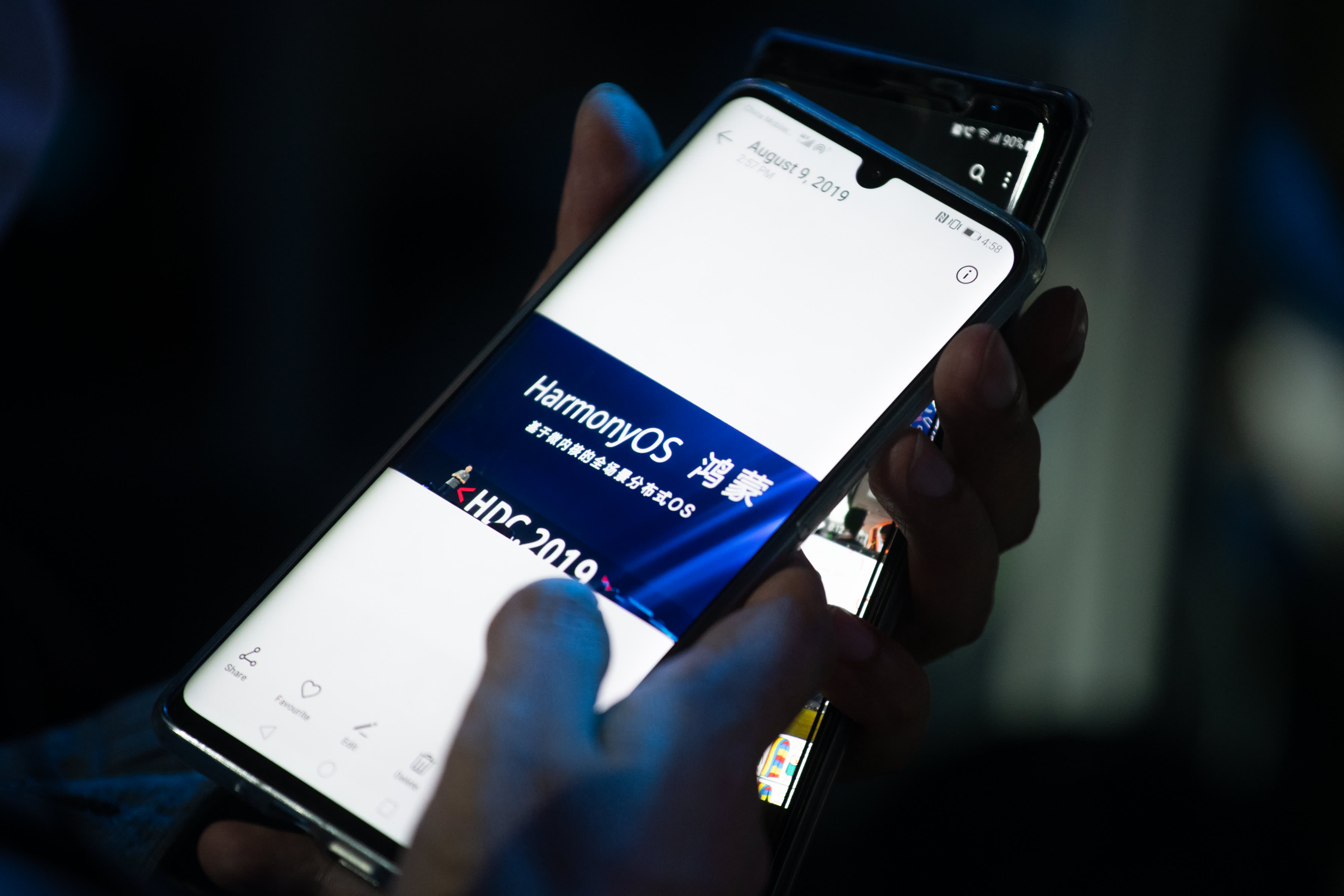
GUANGZHOU, China – In mid-2019, Huawei launched its own operating system – HarmonyOS – in response to US actions cutting off Google software.
It was the Chinese tech giant’s most ambitious push in mobile software, which it hoped would help its cell phone business survive.
On Monday, Huawei announced that HarmonyOS would roll out on its smartphones from April. Huawei phone users could download it as an update.
A spokesperson confirmed to CNBC that users outside of China could also download it. The company’s new foldable Mate X2 device, which launched Monday, is said to be one of the first to get HarmonyOS with other handsets.
In 2019, Huawei was placed on a US blacklist known as the Entity List, which prevented US companies from exporting technology to the Chinese company. As a result, Google severed ties with Huawei. That meant Huawei couldn’t use the licensed Google Android on its smartphones. That’s not a problem in China, where Google apps like Gmail are blocked. But in overseas markets, where Android is the most popular operating system, it was a big blow.
That move by the Trump administration, coupled with sanctions designed to cut Huawei from critical chip deliveries, has hurt the Chinese telecom company’s smartphone sales.
Huawei will have to find a source of chip supplies for its smartphones. But HarmonyOS, according to Nicole Peng, an analyst at Canalys, is the other “critically important” part of ensuring the survival of Huawei’s smartphone business.
Development of HarmonyOS
Huawei touts HarmonyOS as an operating system that can work on a variety of devices, from smartphones to TVs. In September, it launched the second version of HarmonyOS and asked developers to create apps for the platform.
And with international users in mind, Huawei has redesigned the interface for its app store, known as the AppGallery, and improved the navigation functions.
A guest is holding her phone with a photo taken during Huawei’s press conference, where the new HarmonyOS operating system was unveiled in Dongguan, Guangdong province on August 9, 2019.
Fred Dufour | AFP | Getty Images
“Search integrated into the AppGallery will go a long way in helping people discover apps,” said Peng.
Huawei will also push the update to existing users of its devices, which should boost the use of the operating system abroad.
Currently, Huawei’s AppGallery has more than 530 million monthly active users.
Smartphone challenges ahead
Apps are essential for mobile operating systems. Apple’s iOS and Google Android are the two most dominant operating systems as they have millions of developers creating apps for their respective platforms.
Huawei has a range of apps such as maps and a browser under a banner called Huawei Mobile Services (HMS). HMS is similar to Google Mobile Services and offers developer kits that can be used to integrate things like location services into apps. HMS has 2.3 million registered developers worldwide.
And in China, it can bring popular apps on board.
However, Huawei may face some challenges in international markets. For example, the app store lacks big names such as Facebook or Google apps, which are important for users abroad.
“If Huawei is to be successful in selling phones overseas, it needs the right applications, which are unlikely to appear on HarmonyOS. So regaining access to Google Mobile Services is critical if it is to build its international phone business. Bryan Ma, vice president of device research at IDC, said via email.
With Google Android and iOS dominating outside of China, Huawei will also have the steep task of convincing users to switch.
“In terms of challenges, it’s still in areas… (whether) the product can be accepted by heavy users using, say, Google apps and Google services,” Canalys’s Peng said.
Meanwhile, Huawei may also be missing the most important supplies to make phones in the future as the US moves to cut it off from chips. Huawei’s Mate X2 uses Huawei’s proprietary Kirin 9000 processor. Richard Yu, the CEO of the consumer business, said the company has enough production capacity for the foldable phone, even after warnings last year that supplies could run out.
That, along with the uncertainty about the success of the operating system, is a major challenge facing Huawei.
“Huawei could continue to drive the local Chinese market without such concerns (about HarmonyOS apps), but there is a much bigger problem: it has a hard time getting components in the first place,” said Ma.